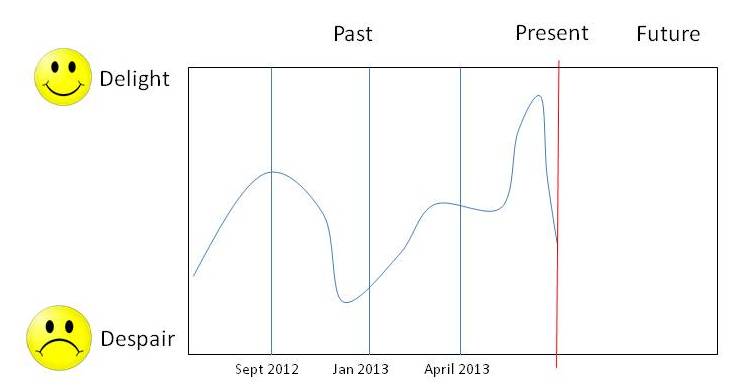One of the common constructs used to ‘frame’ knowledge management activities is that of 'Collect or Connect'.
'Collect' is often thought of to refer to the KM activities closest to document management and information management. It invokes thoughts of ubiquitous SharePoint, intranets, portals, knowledge assets, content, FAQs, wikis, folksonomies and taxonomies.
'Connect' takes us into the areas of networks, communities, social networking, expertise profiling, knowledge jams, cafes, conversations and randomised coffee trials.
There's nothing wrong with either of these domains – any more than there is anything wrong with a bookstore or a coffee shop. But just as there’s more to our high streets than libraries and coffee shops (mind you, there are an awful lot of coffee shops) – there more to KM than 'collect-and-connect'.
So what happens when you put the coffee shop inside the bookstore, then invite an author to sign copies and discuss ideas for new books? That’s one way for new knowledge to be created.
We also create knowledge when we learn from experience, combine and distil existing knowledge, make sense from patterns, collaborate, develop and build upon each others’ ideas. None of this is new, but I'm still surprised at how many organisations build a KM strategy which seems to be entirely fulfilled through SharePoint. What a lack of ambition!
I ran a workshop last week with a group of programme directors from different organisations who are in trust-building stages of forming a community of practice. They had already created a self-assessment tool to provide them with a common language - and identified a number of topics within their overall discipline. We found it very productive to run a group table conversation for each topic along the lines of:
- "What knowledge can we collect - what can we each bring to the table?"
- "Which sub-topics and specific questions can we connect together to discuss, where a conversation is more appropriate than formal information sharing?"
- "What are the areas and challenges where we could collaborate and create new knowledge (products, guides, recommendations, processes) together?"
One hour later we had over 100 pointers to the best content, offers to share documents, a whole selection of informal and formal discussion areas, ad-hoc offers and requests - and a set of new potential collaboration projects to learn together, share experience, create new knowledge-based products and challenge conventional ways of working. Now that's likely to energise this community even more than any double espresso!









